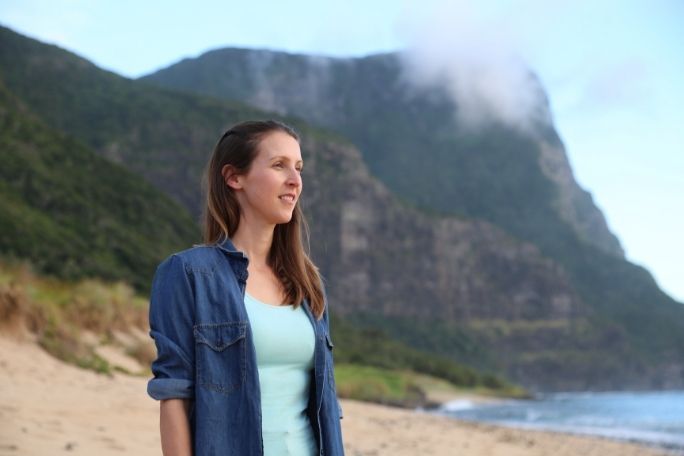Lesson summary
This lesson incorporates clips from Blue The Film as learning inspiration. In this lesson, students will consider verbal and non-verbal communication choices, and how they persuade audiences. They will watch two short videos exploring perspectives about the ocean and environmental issues. Students will further build their understanding of using language to persuade by studying the verbal and non-verbal communication choices in these videos and how they are used to influence audiences. Students apply this knowledge to practise and demonstrate their own use of persuasive language choices to create a text that addresses the issue of plastic pollution, ocean health and marine ecosystems.
Learning intentions:
Students will...
- understand that speaking persuasively about topical issues requires a combination of verbal and non-verbal communication techniques to engage and appeal to audiences
- Students will be able to evaluate the effect of persuasive speaking.
Success criteria:
Students can...
- explain the different types of persuasive language devices
- identify and evaluate the effects of verbal and non-verbal communication choices on audience engagement
- demonstrate their own verbal and non-verbal communication choices.
Lesson guides and printables
Lesson details
Curriculum mapping
Australian Curriculum content descriptions:
Year 9 English:
- Investigate how evaluation can be expressed directly and indirectly using devices, for example allusion, evocative vocabulary and metaphor (ACELA1552)
- Listen to spoken texts constructed for different purposes, for example to entertain and to persuade, and analyse how language features of these texts position listeners to respond in particular ways (ACELY1740)
- Plan, rehearse and deliver presentations, selecting and sequencing appropriate content and multimodal elements for aesthetic and playful purposes (ACELY1741)
General capabilities: Literacy, Personal and Social Capability, Ethical Understanding.
Cross-curriculum priority: Sustainability.
Syllabus outcomes: EN5-1A, EN5-2A
Relevant parts of Year 9 English achievement standards: Students analyse the ways that text structures can be manipulated for effect. They analyse and explain how images, vocabulary choices and language features distinguish the work of individual authors. Students select evidence from texts to analyse and explain how language choices and conventions are used to influence an audience. They listen for ways texts position an audience. Students understand how to use a variety of language features to create different levels of meaning. They demonstrate how manipulating language features and images can create innovative texts. Students create texts that respond to issues, interpreting and integrating ideas from other texts. They make presentations and contribute actively to class and group discussions, comparing and evaluating responses to ideas and issues.
Unit of work: Blue The Film – English – Year 9&10.
Time required: 90 mins.
Level of teacher scaffolding: High – facilitate class discussion and assess student work.
Resources required
- Student Worksheet – one per student
- Device capable of presenting a website to the class
- Persuasive Language Factsheet (one per student). Rhetorical Devices Factsheet (optional)
- Corporate Responsibility – Transcript
- How Do We Combat Our Plastic Addiction – Transcript
Skills
This lesson is designed to build students’ competencies in the following skills:
- Communication
- Empathy
- Social skills
Additional info
Blue is a feature documentary film charting the drastic decline in the health of our oceans. With more than half of all marine life lost and the expansion of the industrialization of the seas, the film sets out the challenges we are facing and the opportunities for positive change. Blue changes the way we think about our liquid world and inspires the audience to action. Find out how to screen or download the film here. Along with the film is an ambitious global campaign to create advocacy and behaviour change through the #oceanguardian movement. To become an ocean guardian, see the website.


Welcome back!
Don't have an account yet?
Log in with:
By signing up to Cool.org you consent and agree to Cool's privacy policy to
store, manage and process your personal information. To read more, please see
our privacy policy here(Opens in new tab).
Create your free Cool.org account.
Many of our resources are free, with an option to upgrade to Cool+ for premium content.
Already have an account?
Sign up with:
By signing up to Cool.org you consent and agree to Cool's privacy policy to
store, manage and process your personal information. To read more, please see
our privacy policy here(Opens in new tab).